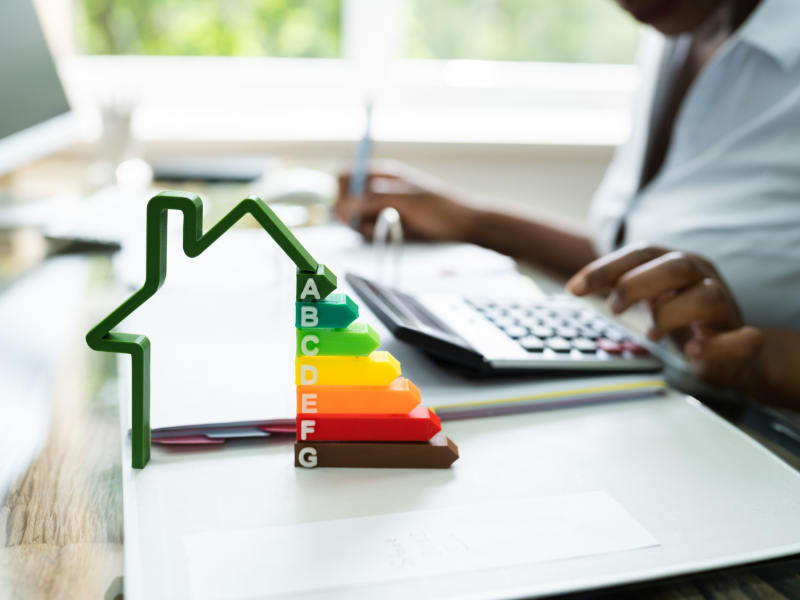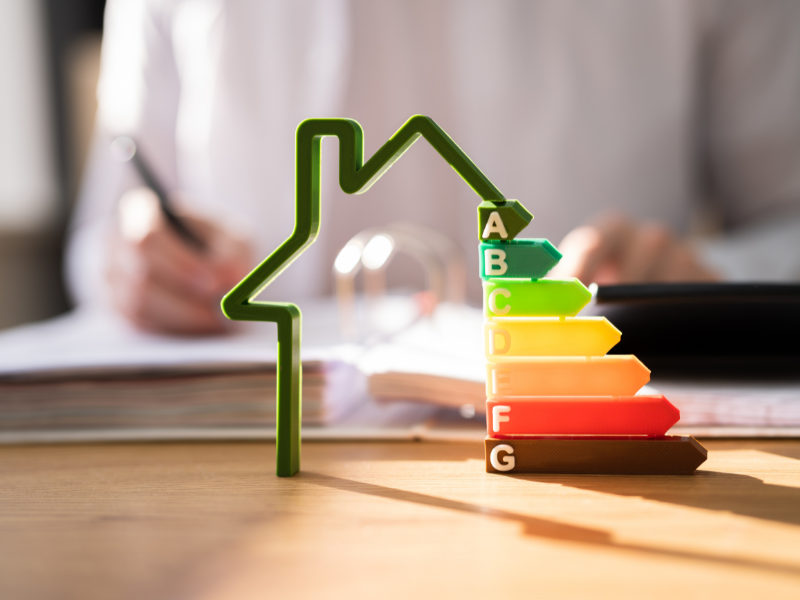Introduction
Energy efficiency has become a critical aspect of modern businesses, as organizations strive to reduce costs, minimize environmental impact, and maintain sustainable operations. In this article, we will explore the world of energy efficiency businesses, offering insights, advice, and guidance for aspiring entrepreneurs and industry professionals.
What is Energy Efficiency?

Energy efficiency refers to the ability to accomplish a specific task or provide a service while consuming minimal energy inputs. It involves optimizing energy consumption through various means such as using energy-efficient technologies, implementing energy management systems, and adopting sustainable practices.
Benefits of Energy Efficiency Businesses

Energy efficiency businesses offer numerous benefits to organizations, individuals, and society as a whole. By improving energy performance and reducing energy waste, these businesses contribute to:
- Cost Savings: Energy-efficient practices can lead to significant cost savings by reducing energy consumption and lowering utility bills.
- Environmental Conservation: By reducing energy consumption, businesses can minimize greenhouse gas emissions and their overall environmental impact.
- Enhanced Reputation: Companies that prioritize energy efficiency build a positive reputation, attracting environmentally conscious customers, and stakeholders.
- Compliance with Regulations: Many countries and regions have stringent regulations and targets related to energy efficiency. Businesses that comply with these standards gain a competitive advantage and avoid penalties.
How to Start an Energy Efficiency Business

Starting an energy efficiency business requires careful planning, market research, and a comprehensive understanding of energy conservation techniques. The following steps can guide you through the process:
- Identify Your Niche: Determine the specific area of energy efficiency you want to focus on, such as residential, commercial, or industrial sectors.
- Research the Market: Conduct a thorough market analysis to identify potential customers, competitors, and market trends.
- Formulate a Business Plan: Create a detailed business plan outlining your goals, target audience, marketing strategies, financial projections, and operational procedures.
- Obtain Necessary Licenses and Certifications: Depending on your location and the services you offer, you may need to obtain licenses and certifications to operate legally.
- Build a Network: Establish connections with industry professionals, suppliers, and potential customers to expand your reach and enhance collaboration opportunities.
- Acquire Tools and Equipment: Invest in energy-efficient technologies, measurement devices, and software to provide accurate energy assessments and recommendations.
- Develop Marketing Strategies: Create a marketing plan to raise awareness about your business, target potential clients, and differentiate yourself from competitors.
Market Analysis for Energy Efficiency Businesses

Conducting a comprehensive market analysis is crucial for the success of an energy efficiency business. Here are key factors to consider:
- Target Market: Identify the specific sectors, such as residential, commercial, or industrial, where your services will have the most impact.
- Competitor Analysis: Research and analyze competitors’ offerings, pricing strategies, customer base, and market positioning.
- Market Trends: Stay up-to-date with the latest technological advancements, industry regulations, and emerging trends in energy efficiency.
- Customer Needs: Understand the pain points and challenges faced by potential customers, and tailor your services to address their specific needs.
- Geographic Factors: Consider regional variations in energy consumption patterns, climate conditions, and government incentives.
Key Factors for Success in the Energy Efficiency Industry
To thrive in the energy efficiency industry, businesses must focus on the following key factors:
- Expertise and Knowledge: Develop a deep understanding of energy efficiency techniques, technologies, and best practices through continuous learning and professional development.
- Customer Engagement: Build strong relationships with clients, provide personalized recommendations, and offer ongoing support to ensure customer satisfaction.
- Strategic Partnerships: Collaborate with industry stakeholders, suppliers, and contractors to expand your reach, access additional resources, and enhance credibility.
- Innovation: Stay abreast of technological advancements and innovative solutions in the energy efficiency sector to differentiate your business and offer cutting-edge services.
- Quality Assurance: Maintain high standards of service delivery, accuracy in energy assessments, and adherence to industry regulations to build trust and credibility.
Financing Options for Energy Efficiency Projects
Energy efficiency projects often require substantial upfront investments. However, numerous financing options can help businesses overcome financial barriers:
- Government Incentives and Grants: Many governments offer financial incentives, tax credits, or grants to businesses that adopt energy-efficient practices or invest in energy-saving technologies.
- Energy Performance Contracts (EPCs): EPCs enable businesses to undertake energy efficiency projects with no upfront costs. The project costs are repaid through the energy savings achieved over a specified period.
- Energy Efficiency Loans: Financial institutions and specialized organizations provide loans specifically designed to fund energy efficiency projects. These loans often have favorable terms, low interest rates, and flexible repayment options.
- Utility Company Programs: Some utility companies offer programs that support energy efficiency measures by providing rebates, incentives, or financing options to their customers.
Challenges Faced by Energy Efficiency Businesses
While energy efficiency businesses offer immense opportunities, they also face specific challenges:
- Lack of Awareness: Many potential customers may not fully understand the benefits of energy efficiency or be aware of available solutions.
- Initial Investment Costs: Energy efficiency projects often require significant upfront investments, which can be a barrier for some businesses.
- Technological Complexity: Keeping up with rapidly evolving energy efficiency technologies and managing complex systems can be challenging.
- Regulatory Uncertainty: Changes in regulations and policies related to energy efficiency can impact business operations and require adaptation.
- Competitive Landscape: The energy efficiency industry is becoming increasingly competitive, requiring businesses to differentiate themselves and provide exceptional services to attract and retain customers.
Case Studies of Successful Energy Efficiency Businesses
Examining successful energy efficiency businesses can provide valuable insights and inspiration. Here are three case studies:
- EcoTech Solutions: This company specializes in energy-efficient lighting solutions for residential and commercial buildings. By leveraging advanced LED technologies, EcoTech Solutions helped numerous businesses reduce their energy consumption by up to 50% and achieve substantial cost savings.
- Green Energy Consultants: This consultancy firm offers comprehensive energy audits and recommendations to optimize processes and equipment. Through their expertise, Green Energy Consultants helped a large manufacturing facility reduce energy consumption by 25% and decrease their carbon footprint.
- Energy Saving Solutions: This startup provides energy retrofit services for existing buildings. By implementing insulation upgrades, HVAC system optimizations, and lighting retrofits, Energy Saving Solutions helped several schools and hospitals reduce their energy usage by over 30% and improve indoor comfort.
Strategies for Marketing and Promoting an Energy Efficiency Business
Effective marketing strategies can help energy efficiency businesses attract clients and build a strong brand presence. Here are some strategies to consider:
- Content Marketing: Create informative blog posts, videos, and social media content that educates potential customers about the benefits of energy efficiency and showcases your expertise.
- Targeted Advertising: Use digital advertising platforms to target specific audience segments, such as businesses in a particular industry or homeowners in a specific region.
- Networking Events: Attend industry conferences, exhibitions, and networking events to connect with potential clients, partners, and industry influencers.
- Referral Programs: Implement a referral program where satisfied customers are incentivized to refer others to your services.
- Collaborations: Partner with complementary businesses, such as renewable energy companies or sustainability consultants, to cross-promote services and tap into new customer bases.
- Testimonials and Case Studies: Highlight success stories, customer testimonials, and case studies to demonstrate the tangible benefits of your energy efficiency solutions.
Building Partnerships and Collaborations in the Energy Efficiency Industry
Building partnerships and collaborations can amplify the impact of an energy efficiency business. Consider the following strategies:
- Supplier Partnerships: Establish relationships with energy-efficient technology suppliers to access the latest products and receive preferential pricing.
- Contractor Collaborations: Partner with HVAC specialists, electricians, and building contractors to offer comprehensive energy efficiency solutions to customers.
- Government Agencies and NGOs: Collaborate with local government agencies and non-governmental organizations (NGOs) working on sustainability initiatives to access funding opportunities, gain exposure, and contribute to larger programs.
- Academic Institutions: Work with universities and research institutions to access the latest research findings, collaborate on innovative projects, and tap into a pool of qualified talent.
Innovations and Trends in Energy Efficiency
The energy efficiency industry experiences constant innovations and emerging trends. Consider the following developments:
- Internet of Things (IoT) Integration: The integration of IoT devices and sensors allows for real-time monitoring, optimization, and control of energy consumption in residential, commercial, and industrial settings.
- Artificial Intelligence (AI): AI-powered algorithms and machine learning techniques can analyze energy data, identify consumption patterns, and recommend energy-saving measures with high precision.
- Energy Storage Solutions: Advances in battery technologies enable efficient energy storage, increasing the feasibility and reliability of renewable energy sources.
- Blockchain Applications: Blockchain technology provides opportunities for transparent energy transactions, peer-to-peer energy sharing, and the creation of decentralized energy markets.
- Decentralized Energy Systems: Microgrids, distributed generation, and smart grids are revolutionizing energy systems by allowing localized generation, consumption, and control.
Government Policies and Incentives for Energy Efficiency
Government policies and incentives play a vital role in promoting energy efficiency. Here are some key examples:
- Tax Credits: Governments often provide tax credits to businesses that invest in energy-efficient equipment, renewable energy systems, or energy retrofits.
- Feed-in Tariffs: Feed-in tariff programs offer fixed, above-market rates for renewable energy generation, incentivizing businesses to invest in clean energy sources.
- Energy Efficiency Standards: Governments set minimum efficiency standards for appliances and equipment to ensure that energy-efficient options are available to consumers and businesses.
- Green Building Certifications: Certifications such as LEED (Leadership in Energy and Environmental Design) encourage sustainable building practices and provide recognition for energy-efficient buildings.
- Research and Development Grants: Governments may provide grants or funding opportunities for research and development projects that focus on energy efficiency and sustainability.
Tools and Technologies for Energy Efficiency
Several tools and technologies can assist energy efficiency businesses in their operations. Some notable examples include:
- Energy Management Software: These platforms help monitor and analyze energy consumption data, identify opportunities for improvement, and measure energy savings.
- Building Energy Modeling Software: Software applications like EnergyPlus and DesignBuilder allow energy auditors and engineers to simulate and optimize building performance through virtual modeling.
- Energy Monitoring Systems: These systems collect real-time energy consumption data from multiple sources, enabling businesses to track usage patterns and identify wasteful practices.
- Smart Thermostats and Controls: Smart thermostats and control systems allow users to automate and optimize temperature settings, resulting in energy savings and increased comfort.
- Energy Retrofit Tools: Tools such as thermal imaging cameras, air leakage detectors, and power analyzers help energy auditors identify energy loss areas and recommend energy-saving measures.
Energy Efficiency in Different Sectors: Residential, Commercial, and Industrial
Energy efficiency solutions vary across different sectors. Here’s a brief overview:
- Residential Sector: Energy efficiency measures in residential buildings include insulation upgrades, high-efficiency heating and cooling systems, LED lighting, and energy-efficient appliances.
- Commercial Sector: Commercial buildings benefit from energy management systems, daylight harvesting techniques, occupancy sensors, and efficient HVAC systems.
- Industrial Sector: The industrial sector can improve energy efficiency through equipment optimization, process modifications, cogeneration systems, and waste heat recovery technologies.
Evaluating the Impact and Return on Investment of Energy Efficiency Measures
Assessing the impact and return on investment (ROI) of energy efficiency measures is essential for businesses. Key evaluation methods include:
- Energy Audits: Comprehensive energy audits assess energy consumption patterns, identify wasteful practices, and provide recommendations for improvement.
- Life Cycle Cost Analysis: This analysis considers the total cost of ownership, including installation, maintenance, and operational costs, to evaluate the financial benefits of energy efficiency measures.
- Payback Period: The payback period determines the time required for the energy savings resulting from a project to offset the initial investment costs.
- Return on Investment (ROI): ROI calculates the financial return achieved from energy efficiency investments and helps businesses determine the feasibility and attractiveness of such projects.
Training and Certification Programs for Energy Efficiency Professionals
Training and certifications enhance the skills and knowledge of energy efficiency professionals. Some notable programs include:
- Certified Energy Manager (CEM): Offered by the Association of Energy Engineers, this certification validates expertise in energy auditing, project management, and implementation of energy efficiency measures.
- Building Performance Institute (BPI) Certifications: BPI offers certifications for professionals involved in home energy audits, weatherization, and building envelope analysis.
- Leadership in Energy and Environmental Design Accreditation (LEED AP): Administered by the U.S. Green Building Council, LEED AP certification focuses on sustainable building practices, including energy efficiency.
- Certified Energy Auditor (CEA): This certification program prepares professionals to conduct detailed energy audits, analyze energy data, and recommend energy-saving solutions.
Success Stories: Real-Life Examples of Energy Efficiency Improvements
Real-life success stories inspire and motivate. Here are three examples:
- The Empire State Building: Through energy retrofits, lighting upgrades, and HVAC improvements, the Empire State Building reduced its energy usage by 38% and achieved significant cost savings. The project demonstrated the feasibility and economic benefits of energy efficiency measures in iconic buildings.
- Walmart: As one of the largest retailers globally, Walmart implemented energy-saving measures in its stores, distribution centers, and corporate facilities. The company achieved a 35% reduction in energy intensity by incorporating technologies like LED lighting, efficient HVAC systems, and advanced energy management systems.
- Intel: Intel, a leading technology company, implemented energy-efficient practices such as power management software, optimized cooling systems, and renewable energy installations. These efforts resulted in significant energy reductions, cost savings, and environmental benefits across their global operations.
Frequently Asked Questions (FAQs)
Q: What is the role of energy audits in energy efficiency businesses?
Energy audits are a crucial service provided by energy efficiency businesses. They involve a thorough analysis of energy consumption patterns, identification of areas for improvement, and recommendation of energy-efficient solutions. Energy audits help businesses understand their current energy usage, determine potential savings, and prioritize energy efficiency investments.
Q: How can energy efficiency businesses benefit from government incentives and grants?
Government incentives and grants can significantly support energy efficiency businesses. These programs provide financial assistance, tax credits, or rebates for energy efficiency projects, helping to offset upfront costs and improve the return on investments. By taking advantage of these incentives, businesses can enhance their competitiveness and attract more clients.
Q: What is the payback period for energy efficiency projects?
The payback period for energy efficiency projects varies depending on factors such as project scope, upfront costs, energy savings potential, and utility rates. Generally, energy efficiency projects have relatively short payback periods, ranging from a few months to a few years. Projects with longer payback periods may still be feasible if they offer significant energy savings and other benefits.
Q: How can businesses evaluate the effectiveness of energy efficiency measures?
To evaluate the effectiveness of energy efficiency measures, businesses can analyze energy consumption data before and after the implementation of the measures. Comparing utility bills, tracking energy usage, and conducting regular energy audits can provide insights into the impact of energy efficiency initiatives. Additionally, businesses can assess customer satisfaction, comfort levels, and employee feedback as indicators of the success of energy-saving measures.
Conclusion
Energy efficiency businesses play a vital role in promoting sustainable practices and enabling organizations to reduce their environmental impact while improving their bottom line. By focusing on the key factors discussed in this article, aspiring entrepreneurs and industry professionals can establish and thrive in this dynamic industry. With advances in technology, collaborative partnerships, and supportive government policies, the energy efficiency sector presents numerous opportunities for innovative solutions and a greener future.




